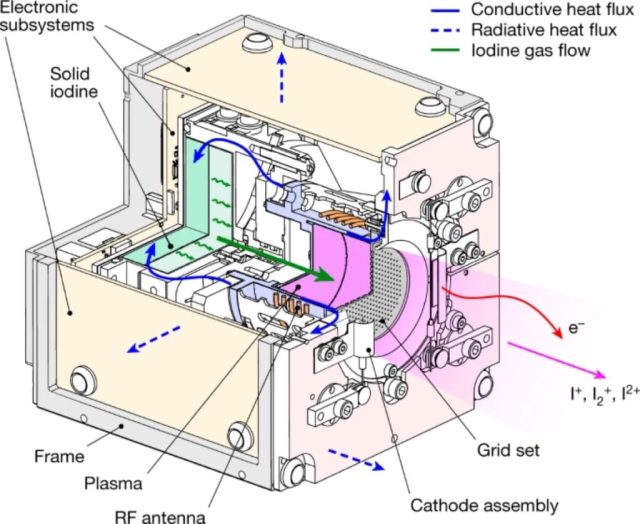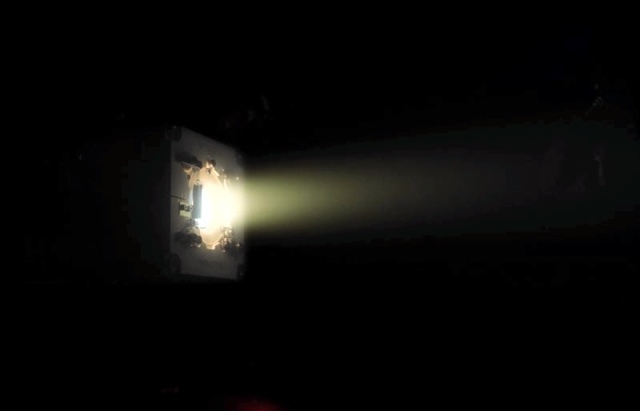ThrustMe startup has reported on the first ever flight of a satellite equipped with an iodine ion engine.
Many spacecraft use ion electric rocket engines, which are characterized by very weak thrust, but they consume fuel so economically that some can serve for years without interruption. This allows satellites to work in orbit for a long time, maintaining the desired altitude, and long-range probes to gradually accelerate, reaching record speeds for flights to other planets.
Such engines emit a jet stream of ionized particles accelerated by an electric field. As a rule, xenon acts in this role — an inert gas with sufficiently massive ions. Unfortunately, xenon is quite rare and expensive to obtain. This greatly limits the use of ion engines, forcing engineers to look for candidates to replace it. The most promising option looks like iodine - convenient, safe, common and cheap.
Projects of iodine engines are created by the Russian RSC Energia and the St. Petersburg Polytechnic University ( 1, 2 ). Such developments are also being carried out by the French startup ThrustMe, which sent its prototype into orbit last year. In the latest issue of the journal Nature, engineers publish a detailed report on the tests. The flight was successful, and the experimental satellite performed all the planned maneuvers using a new iodine engine.

NPT30-I2 engine diagram
Image source: Rafalskyi et al., 2021
The NPT30-I2 engine was installed on the CubeSat, which was launched on November 6, 2020. An important advantage of iodine over xenon is the ability to store it in solid form. Thanks to this, the engine itself turned out to be simpler and more compact; the NPT30-I2 has dimensions of only 96 x 96 x 106 millimeters and weighs 1.2 kilograms, including working fluid reserves — all this is placed in the standard CubeSat 1U format. At the same time, ThrustMe is working on a larger and more powerful variant of the NPT300, suitable for more massive satellites.
It is worth noting that although the engine has demonstrated itself successfully, it is not known how much the developers have managed to solve the problem of its relatively high corrosive ability, which can destroy parts for a long time. With the opportunity to work for years, such systems can open up a huge market. Already today, many deep space probes and thousands of near-Earth vehicles, including numerous satellites of the Starlink system, are equipped with ion engines.

